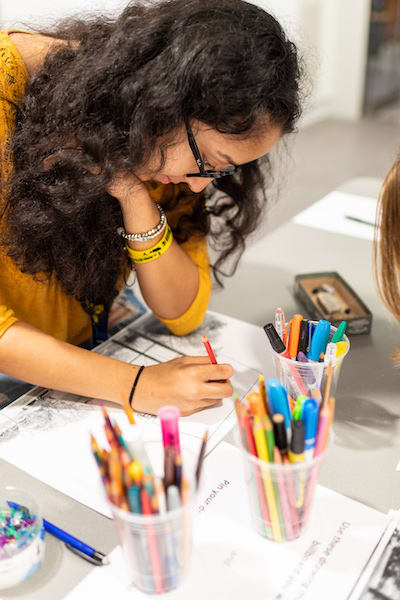
When to Begin
Every project is different. If you’re starting from scratch and you’ve decided on a brand-new look and feel, you may want to begin planning several weeks in advance so that nothing slips through the cracks. If you’re working on a project with an existing look and feel, you can begin planning one or two weeks ahead of time.
Creative Brief
All photo shoots should start with a creative brief, a document that outlines the creative direction and deliverables for the shoot. In this detailed overview, you can begin to think about how you want your photos to look, the number of people you want to include in the shoot, and how the photography can be used in various formats to represent your U-M school, college, or department.
Mood Board
Mood boards can be used to plan and organize the type of photography you want to see in your piece. This is something you can show the photographer to give them a sense of how you are going to use the photographs and the style that you are looking for.
For example, do you want something that’s shot from above or something that’s shot from a low angle? Horizontal or vertical?
Are you doing something where you want to show motion?
Selecting a Photographer
There is nothing more important than finding a talented photographer that you can collaborate well with on projects. Start by reviewing and comparing portfolios from photographers to determine which would best suit the type of shoot you are producing. Then reach out to your favorites with your creative brief and ask them to provide an estimate. We regularly work with our creative partners Michigan Photography on projects. Their photographers are talented and have great insights about the best places to shoot on campus.
Shot List
It is helpful to create a shot list, a simple checklist of every photo you want to capture on the day of the photo shoot. The shot list also includes some visual references and extra details like camera angles or lighting set-up. A clearly defined list will ensure that nothing slips through the cracks.
Call Sheet
A call sheet is a simple tool for organizing your shoot. It outlines everything your talent and crew need to know before the day of the shoot, such as location, contact details, schedule and arrival time. A seamless call sheet will help you avoid a disorganized (or disastrous!) photo shoot.
Day of the Shoot
Plan to attend the photo shoot. Ask the photographer to share what they are capturing along the way and provide feedback. Help keep the shoot moving and on schedule.

It is also important for the art director or designer to scan the background to make sure it’s clear of clutter or items that should not be included such as a soda can or trash. The more eyes you have on the shoot, the better. You do not want to be Photoshopping out water bottles after the fact!
Preparing Photo Subjects/Models
- Be prepared to give photo subjects as much information as possible up front—especially if they have a limited amount of time.
- The better prepared you are going into the shoot, the smoother it will go.
- Make sure your subjects sign release forms that give permission to take photographs and that subjects understand how and where the photos will be used.
- If you’re working with a large group of students in a photo shoot make sure you have some backups on hand in case some subjects do not show up.
- It is also important to let people know how to dress for the shoot. You should suggest that subjects wear clothing that is not too busy with patterns. For some shoots, you may want them to wear U-M gear (sometimes we provide this as a “perk” for our photoshoot participants).


